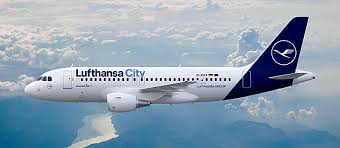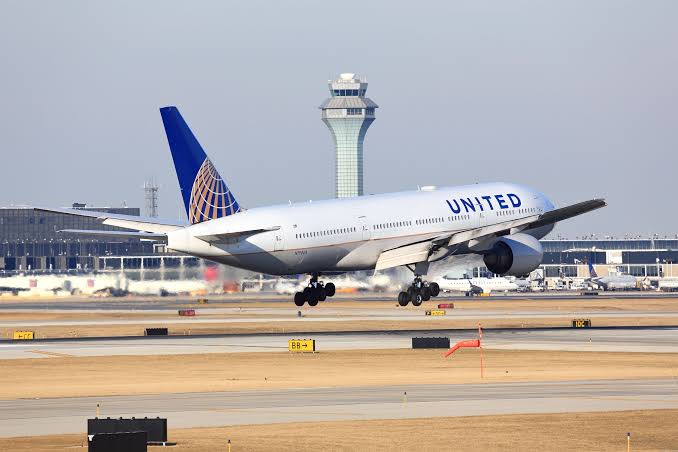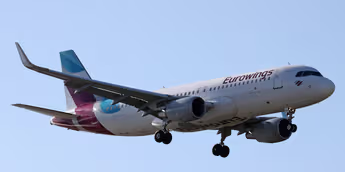United Airlines Earnings Due After Delta Sends ‘Sky Is Stalling’ Signal
United Airlines Earnings Due After Delta Sends ‘Sky Is Stalling’ Signal
As the airline industry prepares for a pivotal earnings season, all eyes are on United Airlines, which is scheduled to report its financial results for the second quarter of 2024. This report comes on the heels of a surprising move by Delta Air Lines, which recently withdrew its 2025 financial forecast due to mounting economic uncertainty, most notably fueled by increased tariffs under the current U.S. administration. Delta’s cautionary stance has sparked concern across the aviation sector, potentially setting the tone for United’s earnings and the industry as a whole.
Delta’s Warning Signs: A “Sky Is Stalling” Signal?
Delta Air Lines’ recent financial update has sent a jolt through Wall Street and the broader airline industry. The airline reported a 29% year-over-year drop in second-quarter profits and announced a scaled-back outlook for the remainder of 2024 and beyond. Citing reasons such as softening consumer demand, shrinking corporate travel, and the drag of new tariffs on global trade, Delta’s leadership noted that it no longer expects flight capacity to increase in the near term—a reversal from its earlier forecast of 3% to 4% growth.

Further compounding the challenges, Delta noted that while premium cabin and international bookings have remained relatively steady, demand for main cabin seats has significantly dropped. This shift reflects a broader economic trend where middle-class and cost-conscious travelers are pulling back amid inflation and economic uncertainty.
Delta’s CEO Ed Bastian was frank in his assessment, describing the current economic climate as “the most unpredictable since the pandemic recovery began.” He also criticized the tariffs introduced by President Donald Trump’s administration, calling them a direct hit to the industry’s recovery trajectory.
Ripple Effects in the Airline Sector
Delta’s announcement did not go unnoticed by competitors or market analysts. Wall Street reacted swiftly, with airline stocks seeing broad sell-offs amid fears that Delta’s woes might be indicative of a wider slowdown. Deutsche Bank and TD Cowen analysts issued warnings of an “earnings recession” across the aviation sector, citing overcapacity in domestic markets and the rising costs of doing business—especially if aircraft manufacturers pass along cost increases tied to tariffs.
These pressures are being felt most acutely in supply chains. Aircraft manufacturers like Boeing and Airbus are facing delays and higher production costs, which are expected to trickle down to airlines. Carriers like Ryanair and Delta have hinted at delaying or even canceling aircraft orders if price hikes continue—moves that could stymie fleet expansion and modernization.
United Airlines: Can It Buck the Trend?
United Airlines, for now, seems to be navigating these choppy skies more smoothly. In its last quarterly report, United posted a 23% jump in profits, reaching $1.32 billion, buoyed by strong international travel demand and a rebound in premium ticket sales. Revenue grew 5.7% year-over-year to $14.99 billion, although this figure came in just under analyst estimates. Adjusted earnings per share were $4.14, surpassing the expected $3.93.
CEO Scott Kirby attributed United’s performance to several factors, including a strategic focus on long-haul routes, an aggressive international expansion plan, and robust loyalty program engagement. United has also made strides in digital transformation and fleet modernization, aimed at reducing operational costs in the long run.
However, Kirby did offer a note of caution: while international and business travel segments are healthy, United is not immune to domestic pressures. The carrier warned that third-quarter earnings might come in below expectations due to a glut of capacity in U.S. markets, forcing fare reductions to maintain load factors.
Still, Kirby struck an optimistic tone: “We believe United is best-positioned to outperform peers in revenue growth in the back half of 2024,” he said in the company’s earnings call. “Our diversified strategy, along with operational efficiency, will allow us to navigate any short-term volatility.”
Market Reaction and Investor Sentiment
Investor sentiment has been split following these developments. Delta’s stock fell sharply after its revised guidance, while United’s stock has remained relatively steady, thanks to stronger recent financial performance and a more optimistic tone from executives.
Wall Street analysts are watching closely to see whether United’s Q2 earnings report will confirm its resilience or suggest cracks in the armor. If United also pulls back on its guidance or flags weaker-than-expected domestic trends, it could further validate the thesis that the airline industry is entering a new, more turbulent phase of recovery.
Tariffs and Geopolitical Risks
A central theme in both Delta’s and United’s near-term challenges is the unpredictable geopolitical climate. President Trump’s renewed focus on trade barriers and tariffs has particularly impacted the aviation sector. Many airlines rely on a global supply chain, and tariffs on imported materials and aircraft parts increase overhead, reduce profitability, and strain already-stretched maintenance schedules.
Airlines have been lobbying for regulatory relief or clearer guidance, but the political winds seem unlikely to shift anytime soon. As a result, executives are being forced to revisit expansion plans, fleet upgrades, and capital investments.
In the long term, the industry may also face new regulatory pressures on environmental and sustainability grounds, which could increase operational costs further. The push toward greener aviation—whether through sustainable aviation fuel (SAF), fleet upgrades, or carbon offsets—will require large capital outlays at a time when the economic outlook is dimming.
What’s Next for United—and the Industry?
As United prepares to release its next earnings report, several key metrics will be under the microscope:
Load factor trends: Are they maintaining capacity discipline, or flooding the market with excess seats?
Yield and pricing power: Can United maintain its pricing premiums, especially in international routes?
Cost control: How is United managing rising fuel and labor costs amid tariff-driven inflation?
Fleet strategy: Will United delay any planned aircraft deliveries or capital expenditures?
Forward guidance: Perhaps most importantly, what does United expect for the remainder of 2024 and into 2025?
If United can maintain its earnings momentum and reassure investors that demand remains solid, it could provide a confidence boost to the broader sector. On the other hand, if United echoes Delta’s concerns, it may signal a more entrenched industry-wide slowdown.
Conclusion: Caution in the Skies
The airline industry is once again flying into uncertainty. While the COVID-19 recovery period brought optimism and a surge in travel demand, 2024 is shaping up to be a more complicated year. Tariffs, political volatility, economic slowdowns, and shifts in consumer behavior are converging to challenge even the most prepared carriers.
United Airlines, for now, appears to be holding steady. But whether it can maintain altitude as storm clouds gather remains to be seen. With earnings season underway, the industry is about to find out just how sturdy its wings really are.






